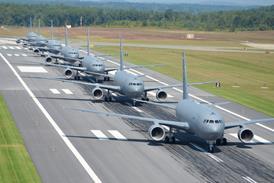STEWART PENNEY / LONDON
AgustaWestland is working with the UK Ministry of Defence to define a programme to rebuild BritishArmy and Royal Navy Lynx helicopters to a broadly common standard that could keep the helicopter in service until 2030.
Jim Sinclair, Westland Helicopters' regional business manager UK, says the Army Air Corps (AAC) and RN will be seeking Lynx replacements in about 2015-18.
He expects to receive an 18-month assessment phase contract later this year. The MoD awarded an initial contract for the programme last month, says Sinclair. AAC Battlefield Light Utility Helicopter (BLUH) funding was provided in last year's equipment budget. Funding for the RN's Surface Combatant Maritime Rotorcraft (SCMR) has not been secured, but it is expected to be in next year's budget submission.
Final approval for the programme is pencilled in for mid-2003, with a BLUH in-service date of 2006. Sinclair says the AAC will probably need 60-70 rebuilt Lynx and the navy about 60.
The existing helicopters' fuel, hydraulic and electric systems, and dynamic components will be installed in new 6,250kg (13,800lb)-capable airframes. The Rolls-Royce Gem engine will be replaced by the Honeywell T800 and the Super Lynx 300's glass cockpit will be used. Maintenance costs will be around 40% lower than today's Lynx and acquisition costs roughly 50% that of new helicopters, he says.

BLUH and SCMR use technologies developed for the export Super Lynx 300 sold to Malaysia and Thailand and selected by Oman and South Africa, experience from 25 years of UK Lynx operations, and support initiatives developed for the AgustaWestland Apache AH1 and Merlin, says Sinclair.
BLUH and SCMR will have "the same engine and airframes that are structurally identical", he says. The army will get the naval airframe, which includes nose hardpoints for forward-looking infrared and radar sensors and a new higher-authority tail rotor. It is also marinised, allowing the AAC operations from ships. BLUH sensors are to be evaluated during assessment phase.
Source: Flight International























